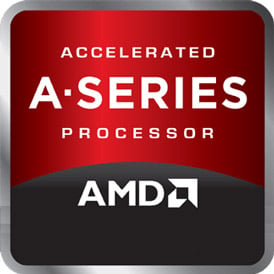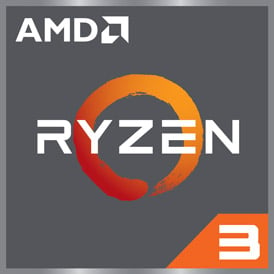 Cinebench R23 (Multi-Core)
Cinebench R23 (Multi-Core)
|
|
AMD Ryzen 3 2200G
4C 4T @ 3.5 GHz
|
3587
|
|
|
AMD A10-9700
4C 4T @ 3.5 GHz
|
1844
|
 Geekbench 5, 64bit (Multi-Core)
Geekbench 5, 64bit (Multi-Core)
|
|
AMD Ryzen 3 2200G
4C 4T @ 3.5 GHz
|
2750
|
|
|
AMD A10-9700
4C 4T @ 3.5 GHz
|
1745
|
 CPU-Z Benchmark 17 (Multi-Core)
CPU-Z Benchmark 17 (Multi-Core)
|
|
AMD Ryzen 3 2200G
4C 4T @ 3.5 GHz
|
1594
|
|
|
AMD A10-9700
4C 4T @ 3.5 GHz
|
762
|
 Cinebench R20 (Multi-Core)
Cinebench R20 (Multi-Core)
|
|
AMD Ryzen 3 2200G
4C 4T @ 3.5 GHz
|
1307
|
|
|
AMD A10-9700
4C 4T @ 3.5 GHz
|
716
|
 iGPU - FP32 Performance (Single-precision GFLOPS)
iGPU - FP32 Performance (Single-precision GFLOPS)
|
|
AMD Ryzen 3 2200G
4C 4T @ 3.5 GHz
|
1126
|
|
|
AMD A10-9700
4C 4T @ 3.5 GHz
|
787
|
 Cinebench R23 (Single-Core)
Cinebench R23 (Single-Core)
|
|
AMD Ryzen 3 2200G
4C 4T @ 3.5 GHz
|
942
|
|
|
AMD A10-9700
4C 4T @ 3.5 GHz
|
596
|
 Geekbench 5, 64bit (Single-Core)
Geekbench 5, 64bit (Single-Core)
|
|
AMD Ryzen 3 2200G
4C 4T @ 3.5 GHz
|
855
|
|
|
AMD A10-9700
4C 4T @ 3.5 GHz
|
556
|
 Cinebench R15 (Multi-Core)
Cinebench R15 (Multi-Core)
|
|
AMD Ryzen 3 2200G
4C 4T @ 3.5 GHz
|
557
|
|
|
AMD A10-9700
4C 4T @ 3.5 GHz
|
303
|
 Cinebench R20 (Single-Core)
Cinebench R20 (Single-Core)
|
|
AMD Ryzen 3 2200G
4C 4T @ 3.5 GHz
|
308
|
|
|
AMD A10-9700
4C 4T @ 3.5 GHz
|
231
|
 Cinebench R15 (Single-Core)
Cinebench R15 (Single-Core)
|
|
AMD Ryzen 3 2200G
4C 4T @ 3.5 GHz
|
142
|
|
|
AMD A10-9700
4C 4T @ 3.5 GHz
|
92
|

